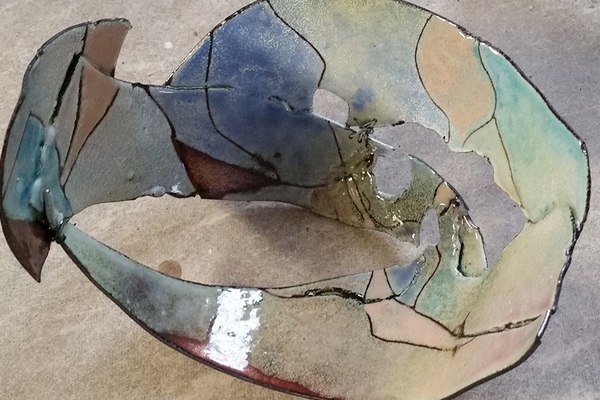The Copper Enameling Process
By Judy Stone
See her work in Vol. IV #2
Starting with a formed vessel or dish, I employ a range of metal-smithing and enameling processes to create vessels that are unique and evocative—perhaps influenced by the Native American cultures of the southwestern United States, where I grew up; or of Greece, where I spent some summers when I was younger.
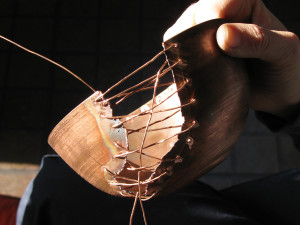
When designing a piece for enameling, I first think about the form, whether I am building the form from scratch or altering an already formed piece. I know I will be allowing the form to move with the heat as it is fired, so my construction always takes that movement into account. On the other hand, I also want to make sure that the construction will not allow for movement after the vessel is finished.
Once the idea for the form of the vessel is settled, I work the copper, using the techniques of raising/sinking, or spinning. I have also begun to experiment with stainless steel as a base form for my vessels.
I finish the shape by “destroying” it (taking it apart), by burning or melting it with a plasma cutter or hot torch, and sometimes by drilling holes. I then reconstruct the form by sewing parts together with copper wire, and attaching copper pieces with copper rivets or copper welds.
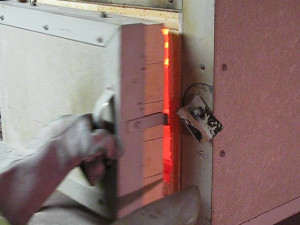
I shape the narrative as I go and do not do any drawing until after the form is complete and the base coat of enamel has been applied. The base coat for my vessels is liquid white porcelain enamel slip, into which I scratch my drawing.
After firing both sides of the drawn piece at the same time, I sift a thin layer of transparent enamel (specially formulated glass) onto both sides of the piece and fire it again. Next follows several thin layers (firings) of many different enamels, floated into place with water.
After the enameling is finished, I glass-etch. It is important to understand that enamel is glass and that the process of enameling is the fusing of glass to a specific metal with high heat. After I have finished applying all my layers of enamel (glass), I can then use a standard etching medium (usually a weak hydrofluoric acid), which many glass artists also use, to matte the surface of my pieces. I begin working the surface with diamond abrasives (usually as an impregnated rubber form or as “smoothing” disks mounted on a flexible shaft, so as not to make deep scratches in the enamel). The etch acts as a fast way of achieving an abraded surface which I can then bring up to a satin finish by using various grit abrasives. By increasing from lower to higher numbers, I am gradually transitioning from coarse to fine, and thus not abrading, but polishing my surfaces.
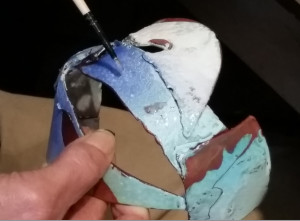
a thin application of finely ground enamel powder.
For me, this tactility is paramount; I work only by hand so that I can feel what is happening beneath my fingers. I know that there will always be areas of depression in the enameled surface that are not polished, but this is all right with me, because ever since I have been enameling, I have been fascinated with texture. I abhor perfectly flat surfaces.
When I begin the actual enameling, I have already considered how the drawn lines and colors will coordinate with the metal form. In fact it is the form that dictates the enameling, although sometimes I have to wait for months before I can conceive of the totality of a piece.
My imagery is always self-referential, and I refuse to deconstruct or interpret it. By “self-referential” I mean that the imagery comes from somewhere inside me and has something to do with my reality. But I allow the imagery to develop by itself, which it tends to do; I am just the enabler. I always begin with a line, which leads to more lines, which in turn lead to negative spaces.
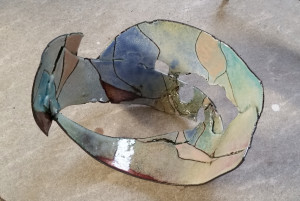
After the piece is finished, I name it. The name can refer to the process of its making, or refer to a place that the vessel evokes. When I am enameling, although I am adding a surface, it is also as if I am peeling away layers of it, to reveal an essential form. When I first started enameling, I began seeing these forms I use now in my dreams, but I had no idea how to make them. As my career in enameling developed, I realized that I was making the pieces that, 30-plus years previously, I had only been able to dream about.

